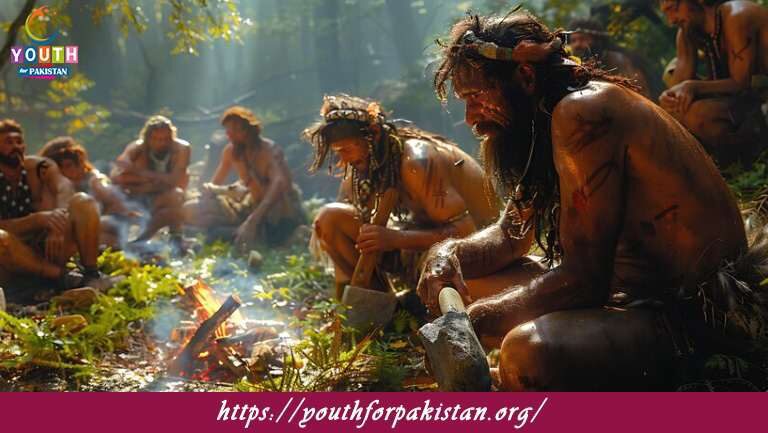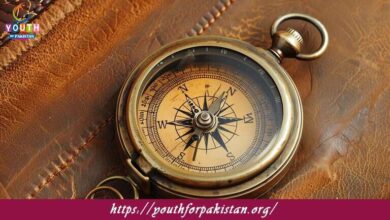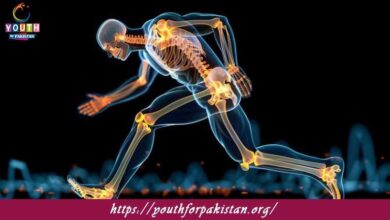12th Class Biology Chapter 24 MCQs with Answers

Explore the fascinating world of Evolution with 12th Class Biology Chapter 24 MCQs. Topics like Darwinism, natural selection, and speciation are covered in detail. Trending terms such as evolution MCQs, Darwin’s theory quiz, and biology evolution test optimize your learning.
What is the process by which favorable traits become more common in a population over time?
a) Mutation
b) Adaptation
c) Natural selection
d) Genetic drift
Who proposed the theory of natural selection?
a) Charles Darwin
b) Gregor Mendel
c) Alfred Russel Wallace
d) Jean-Baptiste Lamarck
Which type of evolution occurs when two separate species evolve similar traits due to similar environmental pressures?
a) Divergent evolution
b) Convergent evolution
c) Coevolution
d) Parallel evolution
The wings of birds and the wings of bats are an example of:
a) Homologous structures
b) Analogous structures
c) Vestigial structures
d) Adaptive structures
Which of the following is a direct source of evidence for evolution?
a) Fossil record
b) Genetic variation
c) Natural selection
d) Artificial selection
What term describes the process by which new species arise?
a) Adaptation
b) Speciation
c) Mutation
d) Genetic drift
The process of genetic change in a population over time is known as:
a) Mutation
b) Evolution
c) Natural selection
d) Migration
Which of the following is an example of vestigial structure in humans?
a) Human tailbone (coccyx)
b) Human brain
c) Human hand
d) Human heart
The theory of evolution by natural selection is based on the principle of:
a) Survival of the fittest
b) Inheritance of acquired characteristics
c) Punctuated equilibrium
d) Hardy-Weinberg equilibrium
What is the name of the ship on which Charles Darwin sailed during his voyage to study the natural world?
a) H.M.S. Challenger
b) H.M.S. Beagle
c) H.M.S. Victory
d) H.M.S. Discovery
Which type of selection favors extreme traits over the average or intermediate traits in a population?
a) Directional selection
b) Stabilizing selection
c) Disruptive selection
d) Balancing selection
In the process of genetic drift, the changes in the gene pool are primarily driven by:
a) Random chance
b) Natural selection
c) Environmental factors
d) Sexual selection
The fossil of a common ancestor shared by multiple species is called:
a) Transitional fossil
b) Extinct fossil
c) Divergent fossil
d) Analogous fossil
The process of genetic material exchange between different species through hybridization is known as:
a) Natural selection
b) Artificial selection
c) Gene flow
d) Genetic recombination
Which of the following is an example of genetic drift?
a) A sudden increase in the population size
b) A random mutation leading to a new trait
c) A severe drought affecting the survival of certain individuals
d) A small population of butterflies getting isolated on an island
The similarity in the forelimbs of mammals, such as humans, bats, and whales, is an example of:
a) Homologous structures
b) Analogous structures
c) Vestigial structures
d) Adaptive structures
The concept of “survival of the fittest” was coined by:
a) Charles Darwin
b) Alfred Russel Wallace
c) Jean-Baptiste Lamarck
d) Herbert Spencer
Which of the following best describes a gene pool?
a) The total number of genes in a population
b) The sum of all alleles in a population
c) The average genetic variation in a population
d) The physical location of genes on a chromosome
The concept of “use and disuse” was proposed by:
a) Charles Darwin
b) Alfred Russel Wallace
c) Jean-Baptiste Lamarck
d) Gregor Mendel
Which type of evolution occurs when two or more species evolve in response to changes in each other?
a) Divergent evolution
b) Convergent evolution
c) Coevolution
d) Parallel evolution
The process by which species that share a common ancestor evolve different traits over time is called:
a) Convergent evolution
b) Divergent evolution
c) Coevolution
d) Parallel evolution
The wing of a bird and the wing of a bat are an example of:
a) Homologous structures
b) Analogous structures
c) Vestigial structures
d) Adaptive structures
Which of the following is a factor that can lead to speciation?
a) Gene flow between populations
b) Large population size
c) Lack of genetic variation
d) Geographic isolation
The gradual change in the frequency of alleles in a population over time is known as:
a) Genetic drift
b) Gene flow
c) Natural selection
d) Microevolution
What is the term for a trait that increases an individual’s chance of surviving and
reproducing in a particular environment?
a) Genotype
b) Phenotype
c) Mutation
d) Adaptation
Which of the following is an example of artificial selection?
a) Polar bears adapting to a cold environment
b) Dogs bred for specific traits by humans
c) Finches developing different beak sizes due to food availability
d) Bacteria becoming resistant to antibiotics over time
Which of the following statements about the Hardy-Weinberg equilibrium is true?
a) The population size must be very small.
b) The allele frequencies must remain constant from generation to generation.
c) Natural selection must be acting on the population.
d) Gene flow must be present between populations.
The study of the geographic distribution of organisms and how it relates to their evolution is known as:
a) Paleontology
b) Biogeography
c) Phylogenetics
d) Population genetics
Which of the following is an example of homologous structures?
a) The wings of a bat and the wings of an insect
b) The wings of a bird and the fins of a fish
c) The arms of a human and the wings of a bird
d) The tail of a whale and the tail of a fish
What is the term for the process by which individuals with certain heritable traits are more likely to survive and reproduce?
a) Mutation
b) Adaptation
c) Natural selection
d) Genetic drift
The study of the genetic variation within and among populations is known as:
a) Paleontology
b) Biogeography
c) Phylogenetics
d) Population genetics
Which of the following is an example of genetic variation?
a) All individuals in a population having the same traits
b) All individuals in a population having the same DNA sequence
c) Some individuals in a population having different traits or DNA sequences
d) Some individuals in a population having identical DNA sequences
Which type of selection favors individuals with intermediate traits in a population?
a) Directional selection
b) Stabilizing selection
c) Disruptive selection
d) Balancing selection
What is the term for the process by which new species arise through the geographical isolation of populations?
a) Adaptation
b) Speciation
c) Mutation
d) Genetic drift
Which of the following is an example of a vestigial structure in whales?
a) Hind limbs
b) Wings
c) Gills
d) Fins
The process of genetic material exchange between populations due to migration is known as:
a) Genetic drift
b) Gene flow
c) Natural selection
d) Microevolution
What is the primary source of new genetic variation in a population?
a) Genetic drift
b) Gene flow
c) Mutation
d) Natural selection
The similarity in the forelimbs of mammals, such as humans, bats, and whales, is evidence of:
a) Homologous structures
b) Analogous structures
c) Vestigial structures
d) Adaptive structures
Which of the following statements best describes gene flow?
a) It decreases genetic variation within populations.
b) It involves the movement of individuals between populations.
c) It reduces the likelihood of speciation.
d) It occurs only through sexual reproduction.
Which of the following is an example of a vestigial structure in humans?
a) Human appendix
b) Human heart
c) Human lungs
d) Human brain
The evolution of antibiotic-resistant bacteria is an example of:
a) Natural selection
b) Genetic drift
c) Artificial selection
d) Convergent evolution
Which of the following is an example of coevolution?
a) Bees pollinating flowers
b) Fish adapting to their aquatic environment
c) Bats developing echolocation
d) Birds evolving different beak sizes due to food availability
The Galápagos finches studied by Charles Darwin are an example of:
a) Homologous structures
b) Analogous structures
c) Vestigial structures
d) Adaptive structures
What is the term for the emergence of new species from a common ancestor over time?
a) Microevolution
b) Macroevolution
c) Mutation
d) Adaptation
Which of the following is an example of divergent evolution?
a) Two bird species developing similar beak sizes
b) Two species of lizards evolving in response to different predators
c) Two populations of butterflies exchanging genes through migration
d) Two fish species evolving similar colors for camouflage
The process by which a new species arises in the same geographic area as its ancestor is called:
a) Allopatric speciation
b) Sympatric speciation
c) Hybrid speciation
d) Artificial speciation
Which of the following statements is true regarding natural selection?
a) It always results in the adaptation of all individuals in a population.
b) It can lead to the extinction of certain traits within a population.
c) It is the sole mechanism of evolution.
d) It occurs more rapidly in small populations.
The wings of birds and the arms of humans are an example of:
a) Homologous structures
b) Analogous structures
c) Vestigial structures
d) Adaptive structures
The process by which individuals with certain heritable traits are more successful at surviving and reproducing is called:
a) Adaptation
b) Speciation
c) Mutation
d) Natural selection
The evolution of pesticide-resistant insects is an example of:
a) Natural selection
b) Genetic drift
c) Artificial selection
d) Convergent evolution
The process of gene transfer between different populations or species due to interbreeding is known as:
a) Genetic drift
b) Gene flow
c) Natural selection
d) Microevolution
Which of the following statements is true about the fossil record?
a) It provides a complete and continuous record of all past life forms.
b) It is biased towards preserving soft-bodied organisms.
c) It does not provide any evidence of extinct species.
d) It does not show any evidence of evolutionary changes over time.
The emergence of antibiotic-resistant bacteria in response to the overuse of antibiotics is an example of:
a) Artificial selection
b) Convergent evolution
c) Genetic drift
d) Natural selection
The process by which individuals with certain heritable traits survive and reproduce more effectively than others in a given environment is known as:
a) Adaptation
b) Speciation
c) Mutation
d) Natural selection
What is the term for a trait that has no apparent function in an organism but may have been useful in its ancestors?
a) Genotype
b) Phenotype
c) Mutation
d) Vestigial trait
The concept of “survival of the fittest” is associated with:
a) Charles Darwin
b) Alfred Russel Wallace
c) Jean-Baptiste Lamarck
d) Herbert Spencer
The process by which a new species arises through geographic isolation is known as:
a) Adaptive radiation
b) Sympatric speciation
c) Allopatric speciation
d) Convergent evolution
The fossil of an extinct species that shares a common ancestor with multiple living species is called:
a) Transitional fossil
b) Extinct fossil
c) Divergent fossil
d) Analogous fossil
Which of the following is an example of a homologous structure?
a) The wings of a bat and the wings of an insect
b) The wings of a bird and the fins of a fish
c) The arms of a human and the wings of a bird
d) The tail of a whale and the tail of a fish
The beaks of Darwin’s finches on the Galápagos Islands are an example of:
a) Homologous structures
b) Analogous structures
c) Vestigial structures
d) Adaptive structures
If you are interested to enhance your knowledge regarding Physics, Chemistry, Biology, and Computer please click on the link of each category, you will be redirected to dedicated website for each category.




